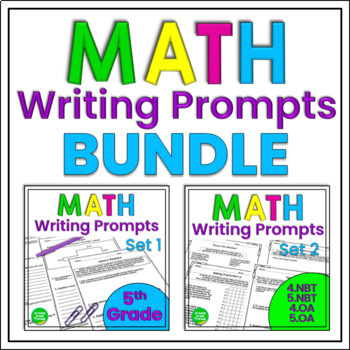5th Grade Math Journal Prompts BUNDLE
- Zip
Products in this Bundle (2)
Description
✅Get your kids writing about math and building problem-solving skills at the same time! This powerful math and writing BUNDLE has 78 three-part journal prompts and constructed response math writing tasks - plenty of teaching, practice, and/or assessment for an entire year! This is a discounted BUNDLE of my original Set 1 and Set 2. I've included a stand-alone rubric as well as one embedded into the tasks.
When students can explain their thinking, they more fully understand math! In these constructed responses, information must be recalled, but it may be put together in a new way. Students may be asked to explain their thinking, tell why they chose that solution path, or explain another situation in which they might have to use the same mathematical strategy. Stress to students that they may use more than one strategy to model their work – in fact, it’s often beneficial to use more than one strategy. Use these as independent classwork, homework, or assessments.
All of the prompts address grades 4 & 5 Common Core Standards. They are challenging because students apply those 4th and 5th-grade skills by modeling and writing about their thinking. In this way, they are constructing their answer.
Want to purchase the individual sets? Click here:
• Math Journal Prompts and Constructed Responses Set 1
➡️Check Out ALL Of My Bundles HERE!
Deals and discounts are as easy as 1-2-3!
1. Remember to leave feedback on your purchase! You'll earn money-saving points toward future TpT purchases.
2. Follow me to be notified when I publish new products, which I always discount for the first 48 hours after publishing.
3. Please contact me if you have any questions or need help! We're all in this together!




